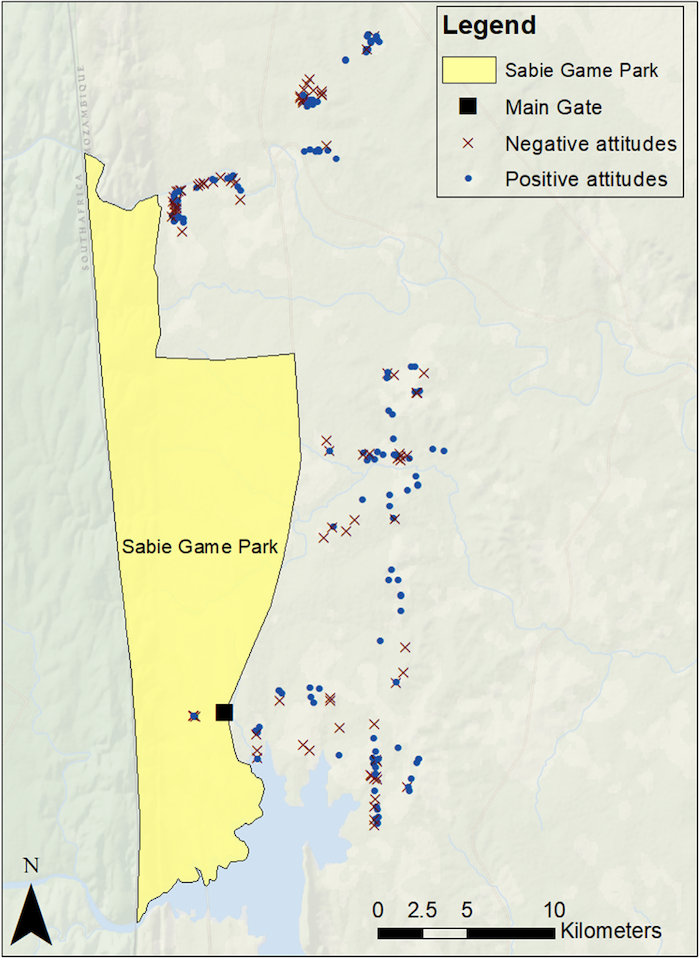
MERZ, FIK, CHILD – Wildlife institutions highly salient to human attitudes toward wildlife
Leadra Merz, Elizabeth Pienaar, Timothy Fik, Shylock Muyengwa, Brian Child
Article first published online: 26 December 2022
DOI: https://doi.org/10.1111/csp2.12879
ABSTRACT: Efforts to promote human-wildlife coexistence may be overly focused on wildlife-related costs and benefits. We conducted research in Mozambique to gain insights into how governance of wildlife influences potential for human-wildlife coexistence. Mozambique is an under-studied region with a unique history of Portuguese rule, extended civil unrest, substantial wildlife trafficking, and current re-wilding efforts. We conducted surveys, logistic regression, and hotspot analysis to assess which variables are correlated with positive attitudes toward living with wildlife. Most respondents (61%) expressed positive attitudes toward living with wildlife. Attitudes were positively correlated with age, gender, distance from the park, wildlife benefits, restricted access to natural resources, and agreement with wildlife rules. Conflict with wildlife (i.e., livestock predation, human harm, and crop loss) were not significant predictors of attitudes. Respondents who agreed with the rules governing wildlife were 30-times more likely to have positive attitudes. This new and important finding highlights the possibility that institutions that address environmental justice, including the devolution of wildlife to local communities, may be more salient than the conventional measures of costs and benefits for understanding human-wildlife coexistence. Our results suggest that much more attention should be dedicated to the role of local institutions in promoting human-wildlife coexistence.
Read the full publication in Conservation Science and Practice.